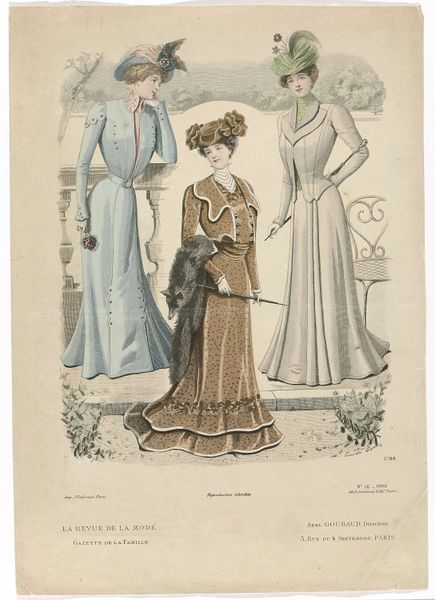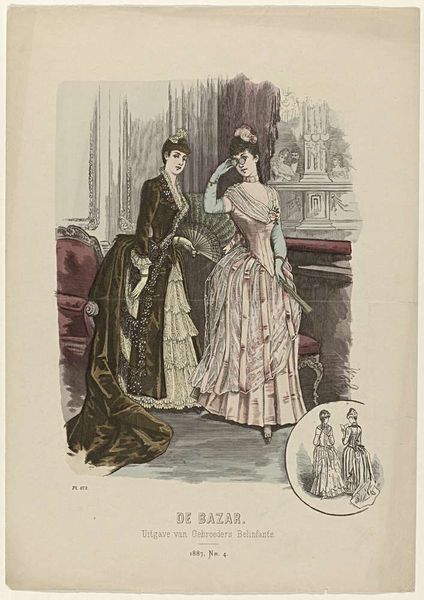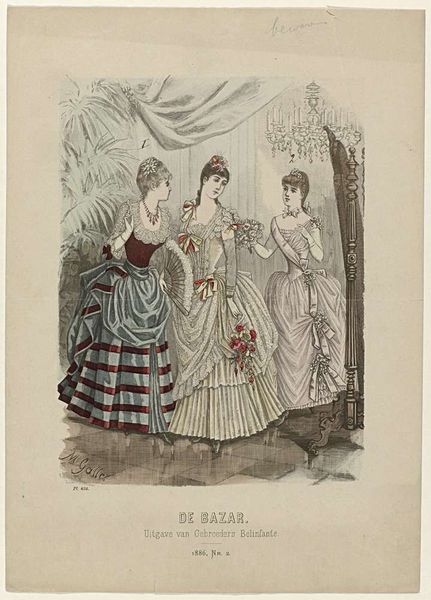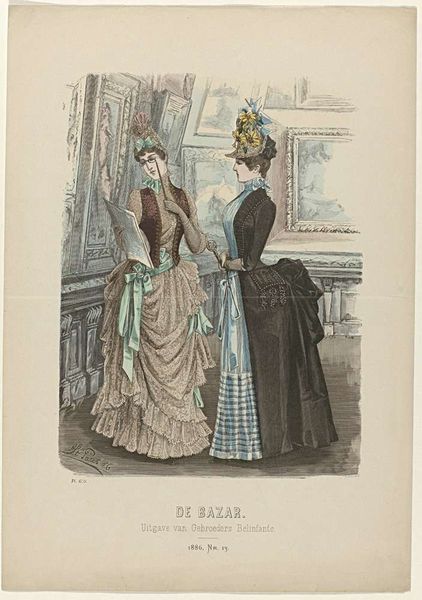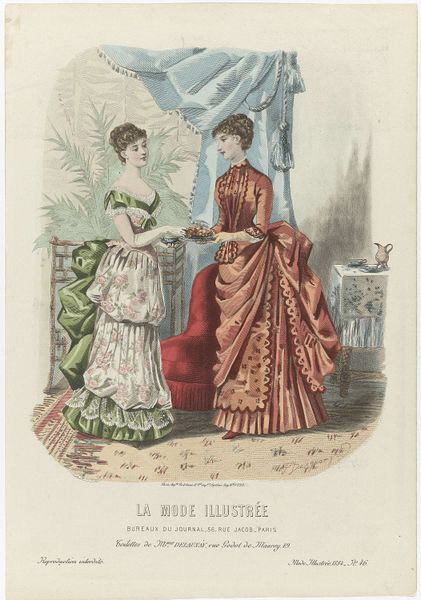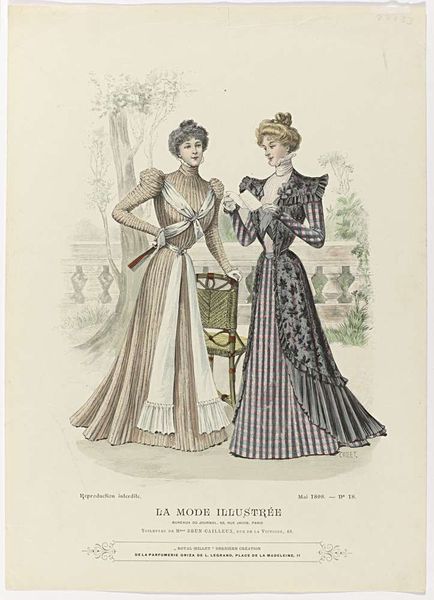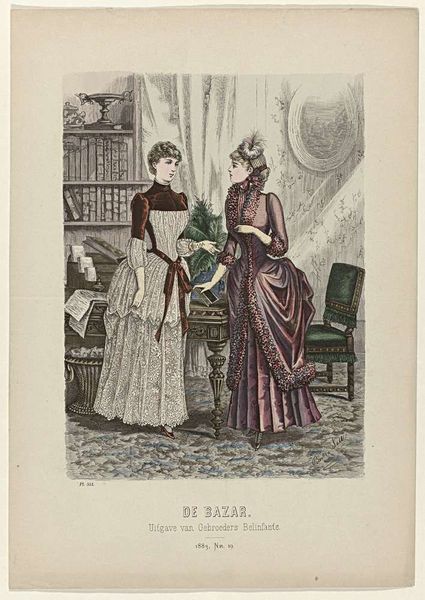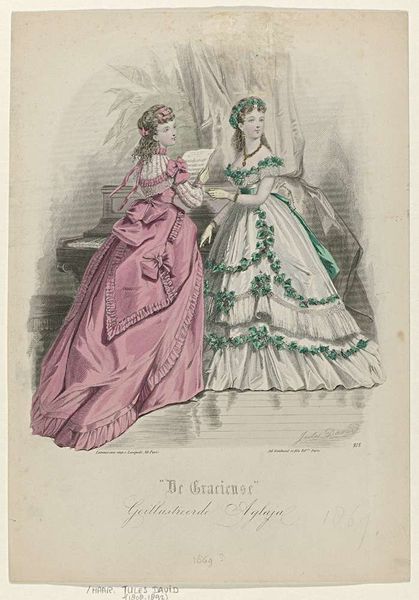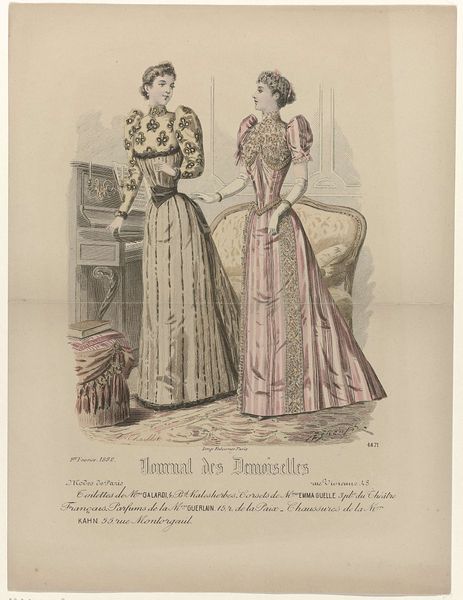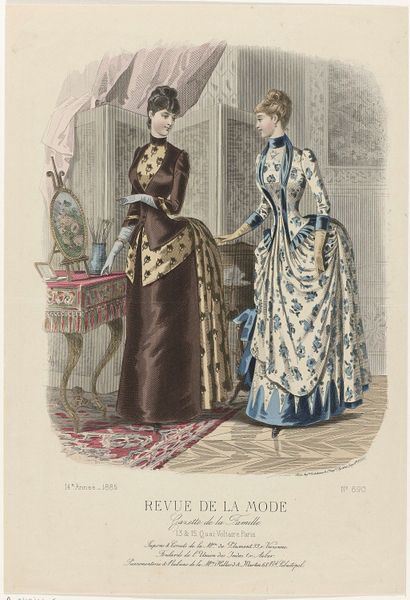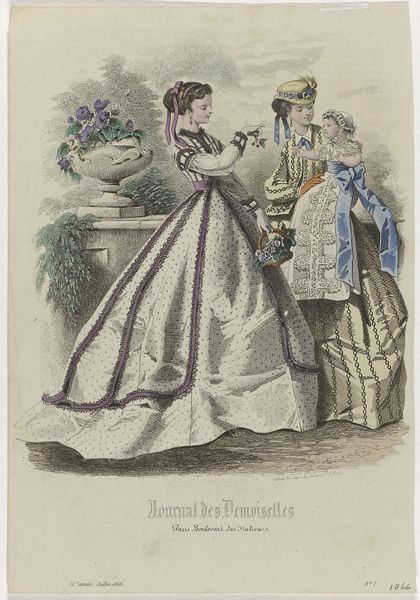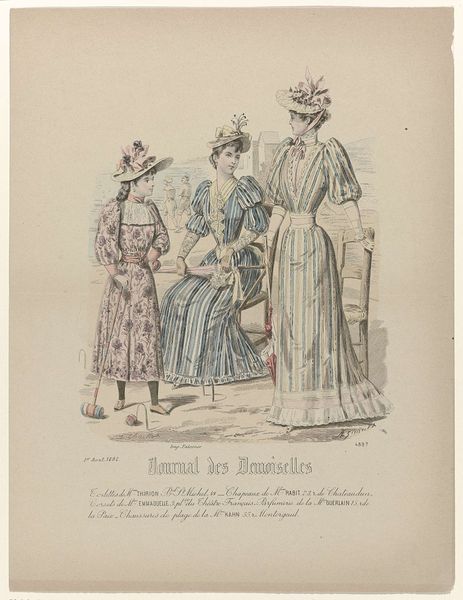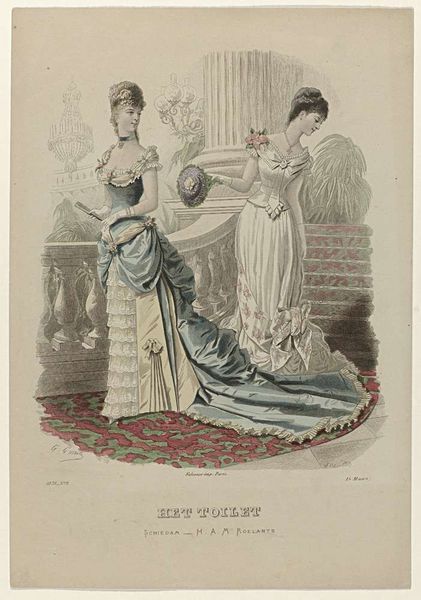
drawing, print, paper
#
drawing
#
art-nouveau
# print
#
figuration
#
paper
#
watercolour illustration
#
decorative-art
#
dress
#
watercolor
Dimensions: height 363 mm, width 272 mm
Copyright: Rijks Museum: Open Domain
Curator: At first glance, I find this image quite captivating with its delicate, almost dreamlike quality. There is such a tenderness to it. Editor: Indeed! Today we're looking at an illustration from the "Revue de la Mode" No. 41 from 1897. The work, printed on paper, presents several fashion designs of the time. Curator: I am immediately drawn to the labor involved in creating such detail. The processes behind each garment from textiles to pattern-making represent distinct material economies of production and the skill in the illustration shows craft. Editor: Absolutely. The Revue de la Mode served as a key communication tool, a medium that propagated specific ideals around femininity, domesticity, and social status during a pivotal period of industrial expansion and burgeoning consumer culture. The detailed rendering would inform not only the well-to-do ladies directly, but garment workers too. Curator: Precisely. Notice how each element implies layers of construction. For instance, the use of watercolour illustration in this period relates to broader decorative arts, blending the boundary between what is “art” and what is considered “design.” We might wonder what specific role it plays, and in this example, how its techniques compare with its artistic merit and production. Editor: Looking closely, you begin to understand the rigid codes these women lived by, the expected performances that upheld particular standards of beauty and propriety. The corsets and elaborate layers visually represent the constraints placed upon women during this time, literally molding them into the ideals that this magazine reinforced. Curator: Exactly, these illustrations functioned within a system. We could even examine the materiality of the print itself—the specific type of paper, inks used, and printing process all played into a material discourse. It invites a discourse, challenging the narrative it originally intended to promote, exposing production and reception behind aesthetic choices. Editor: That’s well put! Looking at the bridal gown in the lower left corner, it’s impossible to ignore how gender roles and social expectations were woven into the fabric of everyday life. It really encourages an ongoing critical engagement that brings historical awareness into the present, fostering much-needed dialogues about representation. Curator: Yes, now my perception has shifted. Editor: It is amazing what insights we get from collaborative exploration!
Comments
No comments
Be the first to comment and join the conversation on the ultimate creative platform.
